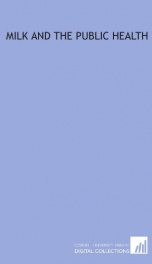the bacteriological examination of food and water

Purchase of this book includes free trial access to www.million-books.com where you can read more than a million books for free. This is an OCR edition with typos. Excerpt from book: ADDENDUM The first edition was only issued some two years ago, and no material advances have been made since that date in the branches of Public Health Bacteriology treated in this volume. It is unnecessary therefore to completely revise the text, more particularly as none of the recent work invalidates any of the methods and conclusions given. A number of different investigations have been published which extend and confirm the conclusions arrived at. In this addendum only those advances and new methods which facilitate the examination of the substances under consideration have been selected and summarised. A number of other procedures have been advocated, but they have not as yet been sufficiently controlled to include them as methods of approved value and utility. I. The Differentiation of the Streptococci. The organisms included under the term streptococci comprise such a large class, are responsible for so great an amount of human disease, and are so widely diffused in nature under saprophytic conditions that it is to be anticipated that repeated attempts will be made to arrive at some trustworthy methods for their differentiation. Such differentiation is as essential from the Public Health standpoint as it is from the more limited pathological aspect, since accurate means of separating streptococci of human from those of animal origin, and the saprophytic from the pathological types, would be of the greatest service. A number of investigations with these objects have recently been carried out, particularly in America, mostly since the first edition was written, and it may be of assistance to discuss, rather more in detail than in the text, how far these investigations have yielded results capable of practical application. From this point of view these tests...
Users who have this book
Users who want this book
What readers are saying
What do you think? Write your own comment on this book!
write a commentif you like the bacteriological examination of food and water try:
Do you want to read a book that interests you? It’s EASY!
Create an account and send a request for reading to other users on the Webpage of the book!



